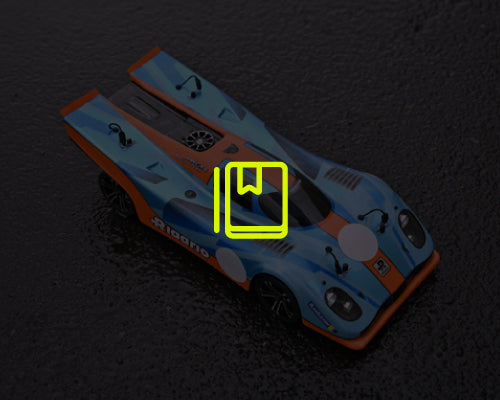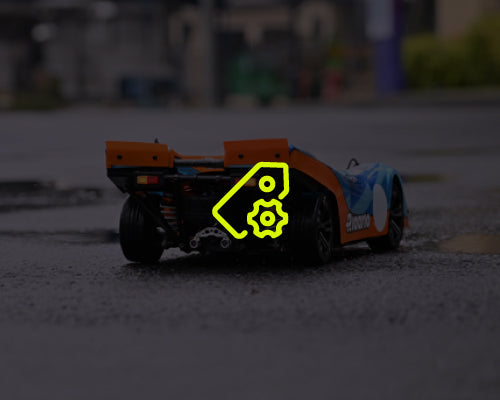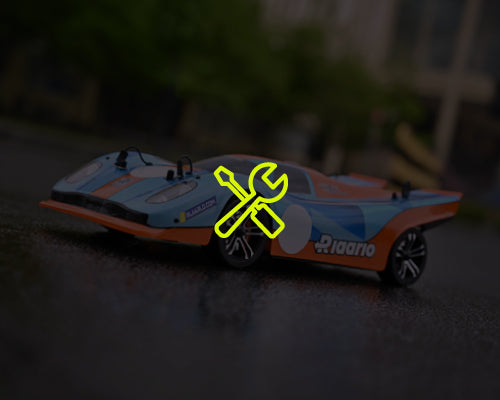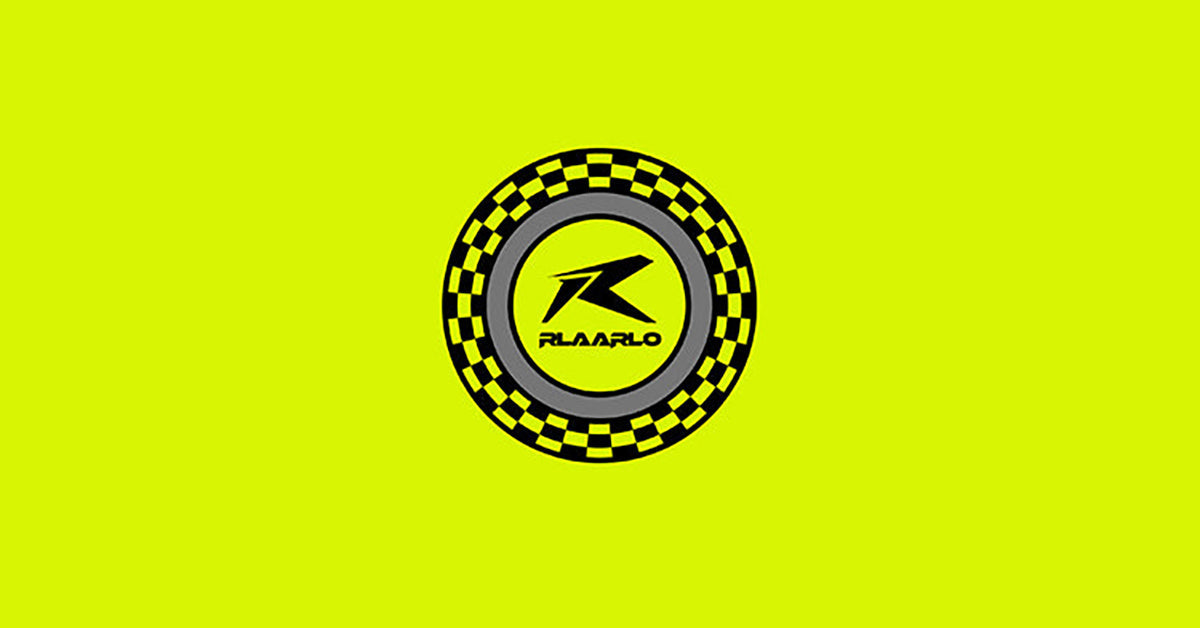AK-917 GUIDE
Product Videos
This supercar not only provides incredible extreme speed, but also can inspire your endless passion
View VideoVehicle Showcase
AK-917 is a professional 1:10 RTR supercar with the aerodynamic structure of a classic model.
Learn MoreProduct Manuals
if you’ve misplaced your AK-917 RC All-Road vehicle’s product manual, don’t worry. You can find it here for viewing or downloading.
Click here to view the user manualStandard Parts
Full range of AK-917 parts, 100% fit for purpose
View NowOptional Parts
Enhance Your AK-917 Experience With Quality Accessories & Parts
View Now




TROUBLESHOOTING
RC Car Routine Maintenance
Daily Usage Precautions
- Not all batteries are suitable for use in humid environments. Consult the battery manufacturer before use. Exercise caution when using lithium polymer (Li-Po) batteries in humid conditions.
- Due to the high conductivity and corrosive nature of saltwater, do not operate the vehicle in salt-containing environments (including seawater or salt-contaminated road water).
- If the motor comes into contact with water, gently apply the throttle and operate at low speed to drain accumulated water, preventing motor damage.
- Operating the vehicle in humid conditions will shorten the motor's lifespan. The additional resistance generated in water causes excessive stress. Adjust the gear ratio by using a smaller drive gear or larger driven gear to increase torque when operating in mud, shallow puddles, or other wet conditions. However, these conditions will increase the motor's load over time.
*NOTICE*:This product features splash-resistant design with certain water-sealing capabilities, but it is not fully waterproof. Do not immerse in water or operate in deep-water environments!
Post-Use Maintenance Procedure for Humid Environments
- Drying Process:
Use low-pressure air blowers for thorough drying.
Pay attention to removing moisture from small gaps or corners to ensure the interior is dry and prevent corrosion. - Lubrication Maintenance:
Apply lubricating oil to metal parts.
Avoid spraying on motors to ensure smooth operation and reduce wear. - Storage Requirements:
Ensure the vehicle is completely dry before storing in a dry environment. - Enhanced Maintenance:
Increase the frequency of inspection and lubrication for bearings,transmissions, gears, and differentials.
Identify and resolve issues promptly to prevent malfunctions.
*NOTICE*:Do not use high-pressure washers to clean the vehicle model.
*NOTICE*:To clean mud and dirt from tires and wheels, remove them from the vehicle and rinse gently with a water hose. However, avoid rinsing bearings and transmissions to prevent water ingress and damage.
*NOTICE*:During drying, keep hands, fingers, tools, and any loose or hanging objects away from rotating parts.
Safety Precautions for Remote Controllers
- Avoid use during thunderstorms – Adverse weather may cause operational failure.
- Do not operate when fatigued, ill, or under the influence of alcohol/drugs – Risk of injury or damage.
- Verify battery charge before operation.
- Keep away from children.
- Remove batteries if storing the controller for over a week to prevent corrosion.
How to maintain and store the battery?
The basic knowledge about the maintenance and storage of lithium batteries (please always follow):
- The new battery is only half-charged when leaving the factory. The battery must be full-charged with the complimentary USB charger before use.
- The full voltage per battery is 4.2V. Over-discharge will damage and swell the battery. And the USB charger will refuse to charge the battery, the above doesn’t contain in the warranty. Discharge until the device stops working before cutting off the power is prohibited. Putting the car aside without cutting off the connection of the battery is prohibited.
- Please disconnect the device and battery if no use for a long time, and store the battery half-charged. The battery is recommended to store with a voltage of 3.8V-3.9V. The battery stored with full charge or discharge will swell easily.
Battery cannot be charged
- Replace the charging cable.
- Ensure proper cable connection and normal light indication (red during charging, green when full).
- Check for overcharge/discharge issues (single cell voltage should not drop below 3.5V).
- Use a multimeter to verify cell voltage and ensure no cell damage.
- When using other brand chargers, pay attention to charging mode and settings.
Battery Charging Procedure
- Pre-Charging Preparation:
Select a well-ventilated indoor area away from ignition sources.
Inspect the charger and battery for physical damage.
Verify battery-charger compatibility (model matching). - Charging Operation:
Connection sequence: First connect charger to power supply, then to battery.
Supervision requirement: Continuous monitoring during charging; overnight charging prohibited.
Age restriction: Operation by personsunder 14 years old is strictly forbidden. - Abnormal Condition Handling:
Identifiable abnormalities:Overheating、Smoke emission、Swelling、Unusual odor、Abnormal sounds
Emergency protocol:
Immediately cut off power supply upon detection.
Disconnect battery before turning off power source. - Safe Storage Practices:
Post-charging: Disconnect battery immediately after charging completion.
Continuous use: Allow charger to cool for ≥30 minutes between sessions.
Storage conditions:
Keep batteries away fromflammable/explosive materials.
Avoidmechanical impact and unauthorized modifications.
Remote Control Connection
Does a Newly Purchased Product Require Pairing?
The transmitter and receiver are factory-paired (1:1) and do not require re-pairing.
How to Pair?
- Connect the vehicle to the battery and power it on.
- Press the pairing button on the receiver using a hand or suitable tool. The receiver's light will change from slow flashing to fast flashing.
- Open the remote control and maintain a safe distance from the vehicle.
- When the receiver's light stops flashing and a "beep" sound is heard, the pairing is successful.
Remote Control Connection Failure
- Inspect if the remote control or receiver is damaged and if the indicator light is functioning normally.
- Ensure the product is in vehicle reception mode, indicated by a flashing receiver light. During pairing, keep the remote control within 2 meters of the vehicle and pair with only one vehicle.
Transmitter and Receiver Frequency Mismatch
- Verify through the manual whether the transmitter and receiver are compatible for pairing.
- Check if both devices have entered the pairing mode.
- If the above steps are correct but pairing still fails, test with another transmitter/receiver to determine if the original unit is defective.
Receiver LED Continuously Blinking
Troubleshooting: Confirm whether the transmitter and receiver have been successfully frequency-synchronized.
Short Remote Control Range
- Inspect for physical damage (e.g., broken antennas on transmitter/receiver).
- Ensure antennas are properly installed and not shielded by metal objects.
- Check if the receiver’s antenna is entangled or interfered with by motor wires, ESC (Electronic Speed Controller) cables, or battery leads.
- Test in different environments to rule out interference from cell towers, high-power routers, or other 2.4GHz devices.
Remote Controller Fails to Power On After Prolonged Storage
Possible corrosion of internal circuitry.
Handling Quality Issues with Newly Received Controllers
Provide order details and a description of the issue via the official website’s support email.
Note:To protect your consumer rights, purchase only through authorized channels. Products from unauthorized sources are not eligible for warranty, technical support, or compatibility guarantees.
RC Car
Steering Issues
- Adjustment for Deviation: When the remote control's joystick is in the neutral position but the vehicle veers off course, use the ST-TRIM function to fine-tune the steering.
- No Steering Function: If the vehicle fails to steer, move the joystick to either extreme position and simultaneously adjust the ST-D/R (steering direction and range) setting.
- Foreign Object Check: Inspect the vehicle's steering components for any obstructions.
- Additional Note: When operating the remote control car, select a suitable path to avoid debris such as hair strands or dirt from getting caught in the chassis and wheels, which may cause the wheels to jam and render the car inoperable.
Unidirectional no rotation, slow bidirectional rotation response
- Check for obstructions blocking rotation.
- Verify the functionality of the EPA (Electronic Position Adjustment) single-stage travel. Ensure the EPA ST value is set to its minimum.
When the throttle trigger is in the neutral position, the vehicle moves forward or backward.
Adjust the TH-TRIM (Throttle Trim) on the remote control for calibration.
Vehicle moves forward/backward without response
- When the vehicle lacks throttle function, lift it or remove the wheels. Adjust the TH-D/R (Throttle Dual/Range) to its maximum.
- Check for obstructions blocking wheels, exposed gears, or a loose drive shaft.
- Ensure the EPA single-stage travel is functioning properly and its ST value is minimized.
Vehicle cannot reach top speed
- Adjust the TH-D/R to its maximum.
- Check for wheel obstructions.
- Ensure the vehicle's battery is fully charged.
Vehicle shakes
- Check wheel tightness and retighten if loose.
- Verify the correct installation of the hex coupler.
- Inspect wheels for deformation and bearings for damage.
Severe motor overheating
Immediately turn off the vehicle's power and place it in a well-ventilated area to cool down to prevent electronic component damage.
CHECK OUT RLAARLO MORE ARTICLE
-

Article
View NowRLAARLO aim to open the RC World to all people regardless of their age, gender, knowledge and skills.Let them enjoy the charm of racing, learn new skills, and share the passion of RC World with others.
-

Race Events
View NowGet insights into the thrilling world of RC car racing and competitions. Find out how to prepare for races, improve your driving skills, and stay updated on the latest RC racing events and news.
-

Support Video
View NowFrom beginner use to mastery, from increased speed and performance to enhanced durability and aesthetics, our guides and tutorials will help you unlock the full potential of your Rlaarlo RC car.




